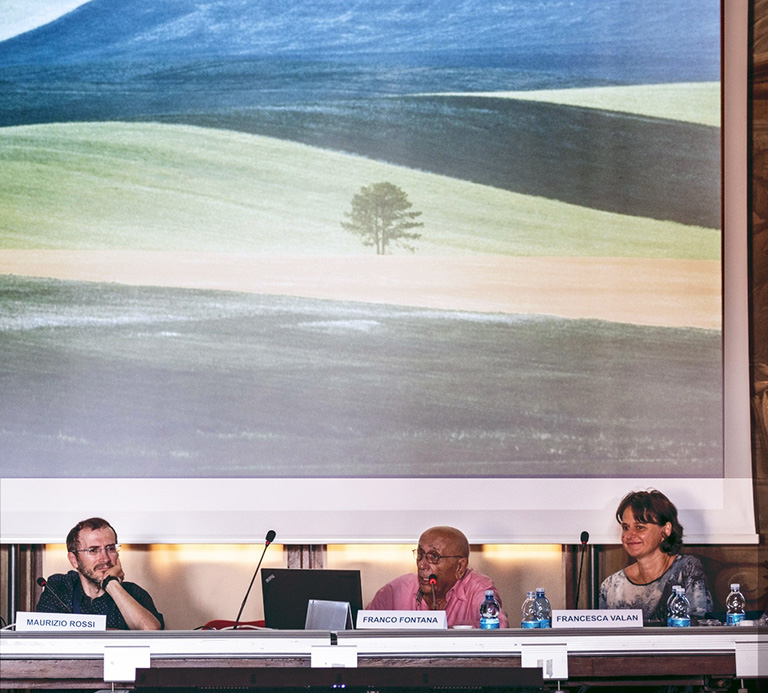COLOR AWARD 2016 to Franco Fontana
Photography was born as a reproduction of reality, and etymologically tells us that this reproduction is carried out by the light of the scene on the paper through a succession of photochemical steps. This concept of photography reached its highest levels in neorealism and in the photographic realism of various authors, who made authenticity and objectivity a constant search to explore all possible nuances of reality, especially human life. Style (a vague but powerful thing) is the qualifying element of distinction. A look at the history of photography seems to indicate Black & White as the privileged means of reproducing reality. Franco Fontana is a photographer because he uses the camera. At a time when Black & White photography prevails, Fontana presents color photographs in which almost all elements with a striking connection to everyday reality disappear. Any pictorialism is excluded. Almost exclusively, what remains is color. A high-chroma color, almost recalling the colors of childhood but rich in real nuances, makes us appreciate those details of the everyday scene usually not captured by a quick and perhaps distracted glance. Few elements, sometimes just one, are present to remind us that we are looking at a photograph: a tree, the slope of a hill, a wave, a shadow… One might say that Fontana’s color is abstract, but immediately the word abstract appears reductive, perhaps improper, and the only way to qualify it is to call it “true color,” giving credit to Manzoni’s historic phrase that “Only the true is beautiful.” This leads us to see how, for Fontana, in this search for truth, there is not only the scene but above all, there is the photographer: “Photography is an act of knowledge; it is possessing what you feel. You use the external, you use the world, to signify what you are, what you represent. In fact, what is photographed is not what we see but what we are. In the world, only what we carry inside is discovered. When I go to take a photo, I go to take, to specify what is my testimony. I go to find, not to seek; I already know what I’m looking for. Each person’s story is subjective.” (from “Franco Fontana Full Color”: San Gimignano, Gallery of Modern and Contemporary Art “Raffaele De Grada”). Then the craft of the photographer intervened. Advertising, themed photo books. True color is no longer alone. But the essentiality of the configuration remains, and color continues to be an attractive and meaningful element. A new discourse arises when Fontana begins to use digital color. The scene is no longer needed. The scene is exclusively in his mind. Fontana reaches the limit where photographic creation, in its freest aspect, renounces any reproduction of reality (Otto Steiner). Imagination manifests itself as the interpretative freedom of reality, and high-chroma color becomes one of Fontana’s stylistic elements. The human figure, when present, is anonymous, except for the (very few) portraits. The naked human body or its shadow is captured in detail as segments of pure form, both in living and colored nudes in the pool and in the nudes of stone and consolidated dust, almost achromatic, in the surprising hymn to eroticism in the Staglieno cemetery. Here, color functions as a contrasting element between the body and the rest, as well as between these and those nudes, these living and those dead.
Claudio Oleari

